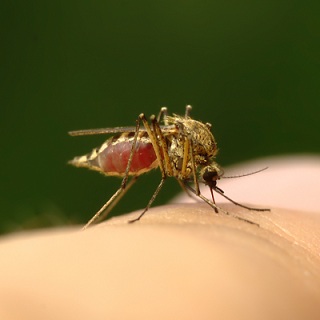A new weapon in the battle against malaria

Related topics
Health Innovation Health, Demographic Change and Wellbeing Germany Sweden United Kingdomdate: 07/02/2014
Project: Development of a handheld antimalarial d...
acronym: NANOMAL
See also: CORDIS
Contact: www.nanomal.org
A snappy 15 minute diagnosis includes parasite, genetic resistance and recommended drug therapy details.
Malaria parasites spread by the bite of some types of mosquito infect around 207 million people each year, according to the World Health Organization (WHO). Malaria is the seventh most likely cause of death in low-income countries, with around 600 000 dying each year, 9 out of 10 of them in Africa (most of them children under 5 and pregnant women).
Elimination, or even control of malaria, continues to become ever more difficult as the parasite can develop resistance to drugs commonly used to fight it – and there is no approved malaria vaccine as yet. Millions of people also continue to lack access to diagnosis and quality-assured treatment, particularly in countries with weak health systems
The NanoMal team has joined the battle by developing the prototype of a diagnostic device the size of a smartphone. The Q-POC device needs a mere drop of blood and 15 minutes to analyse it. This is enough for the machine to identify the two crucial criteria medical workers need to select the appropriate therapy: parasite species (there are five that infect humans naturally) and what levels of drug resistance should be expected.
Inside the unit, the blood cell walls are mechanically smashed open to bare the malaria parasite’s DNA for analysis. Multiplication or amplification of the malarial DNA follows so there is enough to complete the test.
Nano-sized wires, coated with DNA probes, then identify the presence of relevant genes. When DNA from the sample binds to the DNA probes on the nanowires, the resulting electrical signal translates the information into the user-friendly readout.
The team estimates that the device will cost around the same as a smartphone and each test cartridge will initially be around €12.
Tackling resistance village by village
The team plans to conduct clinical trials of the Q-POC device in 2014 in Gabon, with the project completing its work in June 2015. Elaine Warburton, chief executive of project partner QuantuMDx, says the Q-POC device will save lives and tackle the growing problem of drug resistance by enabling health workers to prescribe the right drug the first time.
Under normal circumstances, when information about resistance is not available, patients may continue to suffer or even die if given a drug that is ineffective against the particular type of malaria they have.
Professor Sanjeev Krishna, project coordinator and professor of molecular parasitology and medicine at St George's, University of London describes Q-POC as an amazing tool to collect crucial data about patients and where they live as part of the global campaign to eliminate malaria.
“Even if there is no resistance to a certain drug now, there is always the chance of a mutation occurring and Q-POC has been designed to deal with this situation,” he says. “In the event of a new resistance gene, the markers in the device can be changed to detect this in a patient's blood."
Once it has been tested, the team hopes that the device can be extended to fight other diseases of global concern. Simply swapping the DNA probes and when necessary changing sampling methods means the device can be used to monitor and treat tuberculosis (TB) and HIV.
Q-POC will enable the management of vital medicines at regional or country levels by allowing researchers to build a real-time map of the spread of disease and resistance, adds Warburton. This information will help researchers stay those few critical steps ahead of diseases evolving to resist the drugs currently used to treat them.
25th April 2014 - World Malaria Day
NANOMAL showcase at Innovation Convention 2014, click here
